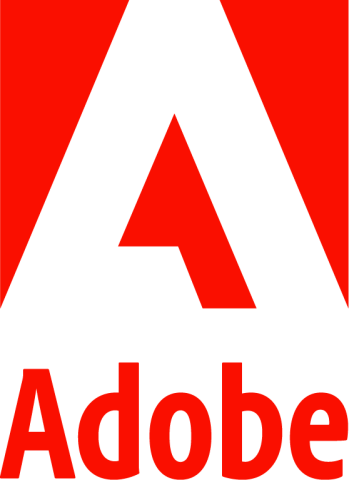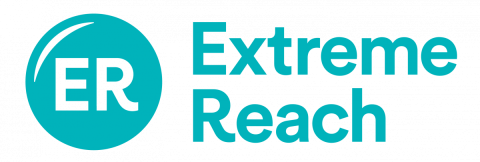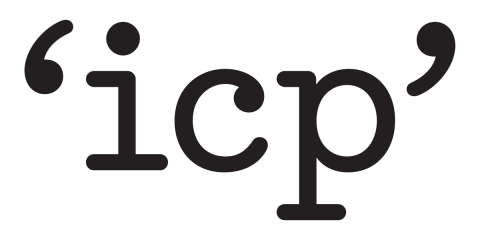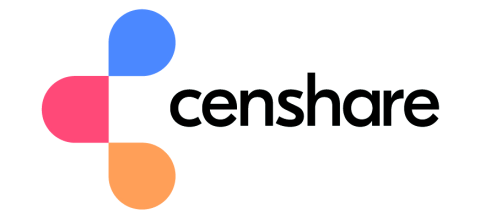DAM New York 2022

First Sessions Announced
We are busy developing an exciting agenda for DAM New York 2022 so keep your eyes peeled for details. Register your interest here to be the first to hear about new sessions and speakers!
In the meantime, check out the first 11 sessions announced:
Content Is the Currency of Your DAM’s Value
The role of DAM in marketing, content generation, and other digital interfaces for global creation
Award-wining and multi-discipline content creator, Quinn Struke, Global Creative Director at STANLEY Security, will share why getting the right content on your DAM is one of the most important aspects of digital asset management. Quinn will examine:
- Is it content that is fully reflective of your brand, and is it uniquely yours?
- Have you developed your assets with intention?
- How can you help bring your brand values and character to life for your audiences?
Come and hear Quinn, whose work has appeared on NBC and in publications such as Fast Company and Transworld Skateboarding, on the importance of ensuring that the content you hold is not only on-brand but developed for maximum value – otherwise, your DAM is about as unique as any publicly available search engine.
Video Workflow … Lessons Learned (so far!) from using Change Management Principles from the Start
Over the last 18 months, Mayo Clinic has focused on integrating a video workflow into the media asset management program. The first stage included a discovery period, followed by an initial design and configuration stage that included training in bite-sized amounts to make the information more digestible.
Join Annie Erdmann, MLIS, Librarian Supervisor at the Mayo Clinic who will discuss the process that brought a creative team of videographers into a DAM mindset and environment as a tool to improve their work processes rather than to erect another barrier to their creativity. Annie will discuss:
- The ADKAR (Awareness, Desire, Knowledge, Ability, Reinforcement) model for change management
- Getting buy-in is a part of the process – there may be resistance to change at first but this shifts to empowerment
- The mindset when implementing a DAM and the video workflow as an iterative process which requires multiple phases, including configurations that continually improve the system and processes for everyone
- Taking onboard valuable feedback and questions from all stakeholders
Establishing DAM Best Practices in the Creative Workflow and how to Drive User Adoption
Integrating digital asset management’s best practices into the end-to-end creative workflow will ensure content has consistent metadata, follows a file naming convention and includes usage rights at the time of content creation. This drives user adaption and content re-use.
The Solution: Ingraining the DAM’s workflow into the creative workflow while efficiently onboarding new DAM users with user training sessions and providing user guides.
The Results: Creating an effective self-service DAM platform for end users to access content to drive sales, customer engagement, company growth and user adaption to the DAM.
Join Charlotte Brown, Director, Digital Asset Management, Clinique for insights on what are complex and challenging areas of the digital enterprise.
Getting Started with DAM: Achieving organizational goals and agile marketing at Canadian Western Bank (CWB) Financial Group
Hear from Nadine Cotter, Creative Director and AVP, Creative Services, CWB Financial Group on its first DAM platform to enhance the value of mature infrastructure and processes for creative fulfillment and, in turn, the achievement of organizational goals rooted in brand management and agile marketing.
Nadine will share experiences of implementing a DAM and the lessons learned along the way, addressing:
- Groups, permissions, getting management buy-in and workflows
- Auditing and migrating content
- Metadata and keywords
- Policies and governance
- Transition to operations
- And … staying organized
So … if you're about to embark on a DAM for the first time, this session is for you as Nadine will share the pain points and provide a valuable heads-up or two as she gives you a peek at the days and decisions ahead.
Building and Installing a New MAM – Creating Best Practice in Video Management but is it all Plain Sailing?
When deciding to go the MAM route, you need to have a full understanding of your workflows including the ones you are only cursorily involved with and, where possible, a complete understanding of how the MAM works so you know how it will fit into your production environment. Everyone works differently … no two MAM installs are the same. So, whatever the MAM puts forward as its strengths it will still require some customization.
We’ll hear from Jamie Wilson, Senior Director, Post Production at Showtime Networks, Inc. on exploring the need for significant upgrades in MAM and the essential workflow benefits for video management an upgrade will bring.
In this session, Jamie will explore:
- Why build a MAM? Or upgrade the existing? Is it worth going through the pain?
- What are you looking for:
- Platform or package?
- Who makes the decision?
- What’s the end-goal?
- Who’s building the thing and what’s the timescale?
- How will the new MAM fit into your environment and what impact will that have on your current workflows?
Change Management and DAM: How it Benefits Governance and User Adoption
Frequently DAM systems are all about change; from small changes administrators make to help support end users, to major changes, such as a large system migration, or building a new DAM platform.
It is important to focus on the project as an ever evolving and expanding environment.
DAMs are not meant to stay stagnant! Part of the growth comes from adopting change management and understanding how user adoption and governance plays a significant role in the successful implementation of any change within the DAM.
Jennifer Sunday, Global Technology DAM Manager and leader of the global DAM practice for Stanley Black & Decker, Tools division will share key drivers in change management focusing on four crucial elements:
- What is change management, and why is it important?
- What are the key things to think about?
- What are the benefits?
- How to involve/engage users?
In this session, Jennifer will highlight best practice in engaging users for change, adopting the principles of:
- Tell them ahead of time
- Communicate effectively so there are no surprises
- How to make and implement change
- Evaluating change at multiple places in the journey
- How to make improvements and enhancements
How can we leverage the growth of the DAM, using change management to benefit governance practices and user adoption to get ‘THE BIG WIN’?
Tune into the session to find out!
DAM Good Governance – Why Have It and Why Is It So Important to Get Right
Governance underpins your organization’s DAM and is the crucial process that holds your DAM together. Ignoring Governance is no longer an option and, what’s more, adherence to Governance regulations must be a priority as more and more organizations become truly data driven.
Getting Governance wrong is a costly mistake.
There is no escaping it: the full value of your data and content is vital, and Governance is the framework which ensures that program goals are met both during DAM implementation and in the future.
To be effective, Governance must:
- Be considered as an holistic corporate objective
- Establish policies, procedures, and training for the management of data across the organization
- Reach all levels of the organization
- Ensure that your metadata – business needs, user needs, and language change – must stay relevant
This session, moderated by John Horodyski, Managing Director, Insights & Analytics at Salt Flats, will be an informative and engaging discussion on the who, what, how and why of Governance focusing on key drivers including:
- How to do Governance
- Is there more than one Governance?
- Communications, transparency, and accountability
- Governance and DEI (Diversity, Equity & Inclusion)
- Challenges and success stories
Panel:
Jennifer Dawson, Digital Asset Database Administrator, St. Judes Children’s Research Hospital
Kyle McNamara, Content Operations Manager, The Hershey Company (Hershey’s)
Joy Wiegand, Digital Content Specialist, Global Brand Architecture, Amway
Staying on Top of What’s Next for Our DAMs
DAM is all solved now, right?
You have a nicely curated set of assets and solid metadata, so all you have to worry about is keeping it accurate.
Well, not really!
The truth is that the business around us is changing, sometimes very quickly, and our DAM systems and processes often need to change to keep up.
Our content is expected to be ready anytime, anywhere, and our businesses are constantly challenged in exciting new ways like data/analytics, second screen, AR/VR, metaverse, and more.
Our content, our metadata, and the ways we serve them up must stay useful and relevant.
So, what does this all mean for our DAM teams in real life?
This panel will explore what it takes to keep our DAM in sync with an evolving business around us, and what it takes to think about being ‘ready’ for what’s coming, rather than reacting after it has happened. The panel members will explore:
- Keeping our tools and technologies ahead of where our business will need them to be
- What new dimensions of content must we incorporate so we are always ‘ready’ when the business needs them?
- Keeping our metadata models up to date and useful
- Making sure our users keep getting the search results they want, as what they need and expect changes
- How to govern DAM at the speed of business
Moderator:
Graham Allan, Managing Director, Deloitte Consulting
Panel:
Leah Carlson, Senior Manager, Global Content Operations, McCormick & Company, Inc.
When DAM met PIM: is it a Lasting Relationship?
When challenged with tagging their content and assets with the correct product information, many organizations discovered the power of bringing their Product Information Management (PIM) data into their DAM system. Some say that when DAM met PIM, a power couple was born.
DAM has all the glossy photos, beauty shots, short videos, and content collateral that introduces shiny new products. PIM has the substance with product names and all its attributes from dimensions to shelf life to ingredients or compounds. Together, they can quickly deliver digital shelves, newsletters, product campaigns, and social media updates with trusted and accurate information.
Conversely, some risks include overwhelming your system with data that a typical digital asset doesn’t need and forcing data management into a system that was never meant to handle complex product hierarchies.
In this panel, we’ll explore the pitfalls and potential of approaching Product Information and associating it with content and asset metadata in a DAM system. Topics explored:
- When does PIM start to crowd the DAM with too much information?
- Who manages the PIM within a DAM?
- PIM is usually managed in large, fortressed repositories that are used for financial reporting. How do you integrate and synchronize Product information?
- How and where does Master Data fit into DAM & PIM?
- Is PIM a data asset?
Moderator:
Christopher Grakal, CEO, ICP
Panel:
Carol Freed, Digital Asset Manager, Product Information Management, L’Oréal
Managing Metadata for Diversity, Equity, & Inclusion – Because it is Imperative to Understand People, Processes and Technologies
It is vital to understand and be mindful of the people, processes and technologies that may influence the transformation and end-goals you desire. Metadata really does matter because not only does it give structure and meaning to the data associated with all that we do in our business and personal transactions, it also tells you:
- Where your content came from
- Where your content is going
- How your content can be used
Metadata is about meaning and must change with societal norms in a respectful and inclusive manner.
This panel, moderated by John Horodyski, Managing Director, Insights & Analytics, Salt Flats, will feature a lively discussion and an overview of the power of language and metadata. It will focus on your digital strategy work, and modern examples of how to manage metadata for diversity, equity, and inclusion.
Panel:
Dr. Reem El Asaleh, Associate Professor, Toronto Metropolitan University (formerly known as Ryerson)
Carol Thomas-Knipes, Vice President, DAM Program Manager & Administrator, Global Marketing Team, Citi Bank
MAM – Media Asset Management System, Change Agent … or Both?
A MAM is not only a content management system but also a tool to bring together teams, systems, and provide easy access to content for all users.
At the Canadian Broadcasting Corporation (CBC), the MAM has inspired many changes and provided great opportunity for effective and ongoing change management and collaboration.
Hear Christine Cadotte, Project Lead – Metadata Optimization, Content Management and Preservation, and Rebecca Efrat, Library Coordinator, Semantics & Metadata, CBC share the huge opportunities the MAM has created including:
- How the MAM has enabled the CBC to emerge from silos and seek collaboration with other teams
- Using metadata governance to bring people and ideas together
- Using taxonomies to connect systems and content
- Embracing what an API can do for your MAM and other systems





















